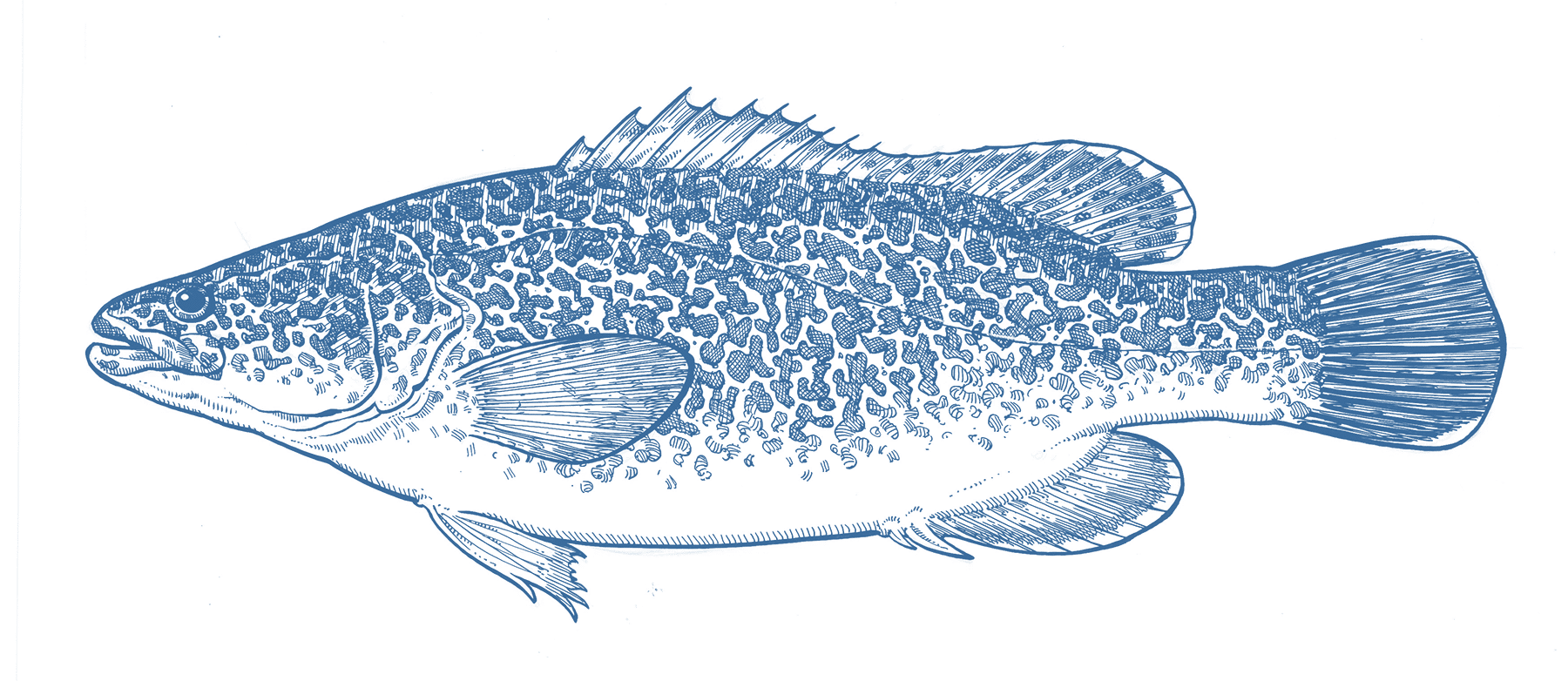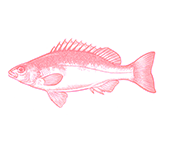




- Better Choice
Farmed
Region:
NSW, VIC
- Murray cod is a freshwater species of fish. Previous commercial fishing activity depleted populations and the species is now listed as protected under Federal environmental law.
- This assessment is for Murray cod that is farmed on land in ponds, recirculating tanks and agricultural irrigation dams. Operations are small and wastewater is managed to ensure low impact on surrounding environments.
- Broodstock for farming is produced in hatcheries, meaning farming operations are not dependent on juveniles caught in the wild.
- The amount of wild caught fish needed to produce fishmeal and oil for Murray cod feed is roughly equivalent or less than the amount of farmed fish produced. This means that the farms aren’t taking out more fish from the ocean than they produce.





Murray cod has lustrous, pearly white flesh. Murray cod can be cooked as portions, fillets, or as a whole fish. It will remain moist when cooked using wet methods such as steaming or poaching. It can also be pan-fried, barbecued or roast. If roasting a whole fish, wrap it in paper or foil to prevent it from overcooking. Murray cod pairs well with Asian flavours – try steaming fillets with a little soy, sesame, ginger and spring onion for great results.
- NSW, VIC (~516t in 2020/21)
Murray cod is Australia’s largest species of freshwater fish. The species was once the target of a commercial fishery, but following extensive declines in fish numbers, it is now listed as ‘Vulnerable’ under Australian environmental law.
This assessment is for Murray cod farmed by different companies in land-based ponds, recirculating tanks and increasingly in agricultural irrigation dams. Fish farms are generally small-scale and effluent is managed under the regulations of the jurisdiction where farming takes place. Effluent from fish farmed in recirculating tanks in NSW is sterilised, and in Victoria, wastewater is discharged into sewage treatment networks. In other areas, fish farm waste water is used to irrigate crops. Murray cod farming operations therefore have a low impact on surrounding terrestrial and freshwater environments.
Significant expansions are planned by the industry, which will largely occur in dams used for irrigation of agricultural land; there are currently minimal environmental concerns over industry expansion.
Broodstock for farming is produced in hatcheries, meaning farming operations are not dependent on juveniles caught in the wild. Therefore farming Murray cod does not reduce wild population numbers. Hatcheries producing Murray cod for fish farming also provide juvenile fish for restocking programs in rivers.
As a carnivorous species, Murray cod are dependent on the fishmeal and fish oil in feed sourced from wild-caught fish. However they can be farmed on a diet relatively low in fishmeal and oil, and feed manufacturers continue to produce feeds with lower quantities of wild caught fish. Farmed Murray cod has a better ‘wild fish in to farmed fish out’ ratio than farmed carnivorous finfish species such as rainbow trout and Atlantic salmon. The amount of wild caught fish needed to produce fishmeal and oil for Murray cod feed is roughly equal to the amount of farmed fish produced. This means that the farms aren’t taking out more fish from the ocean than they produce.


